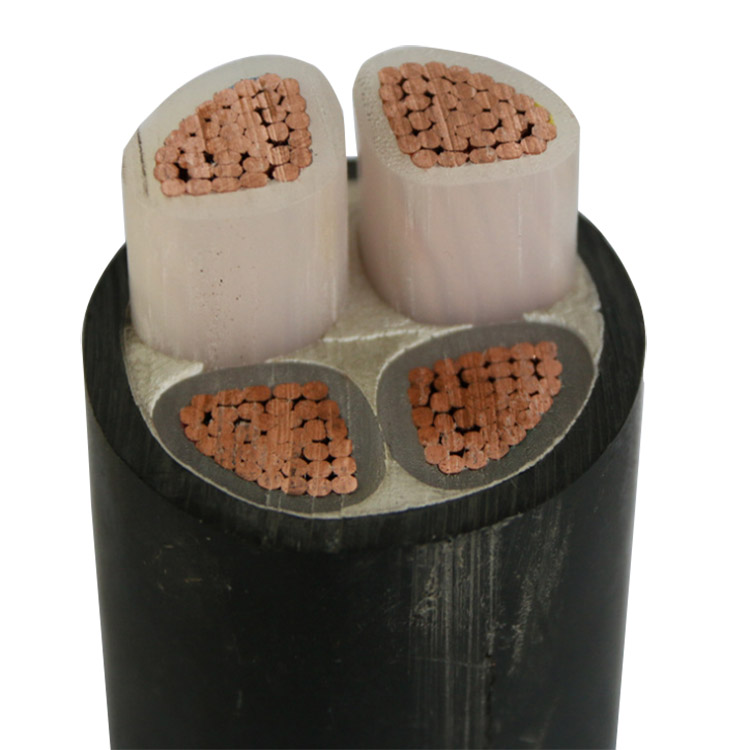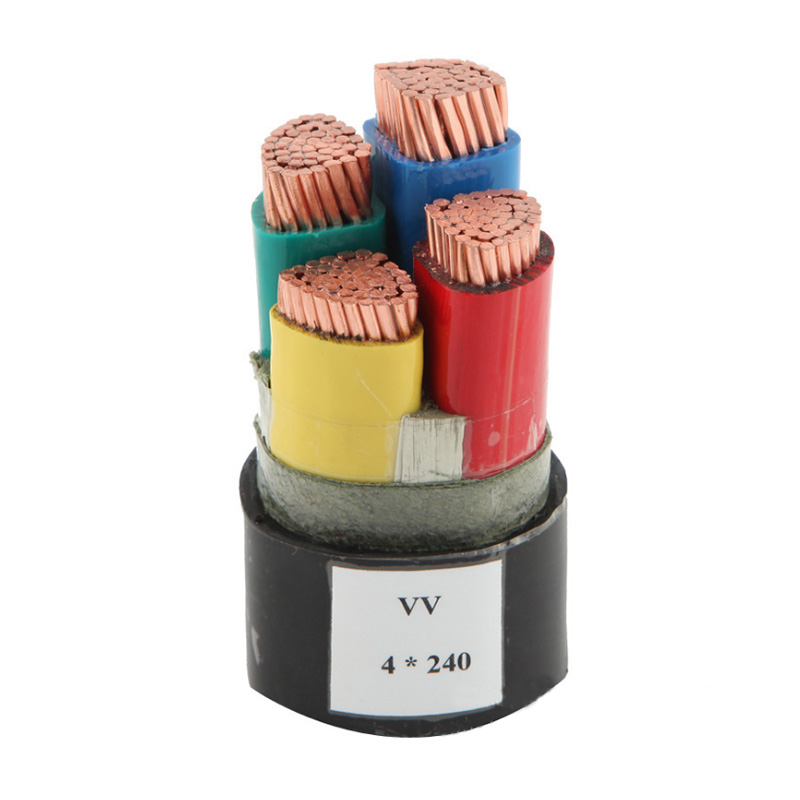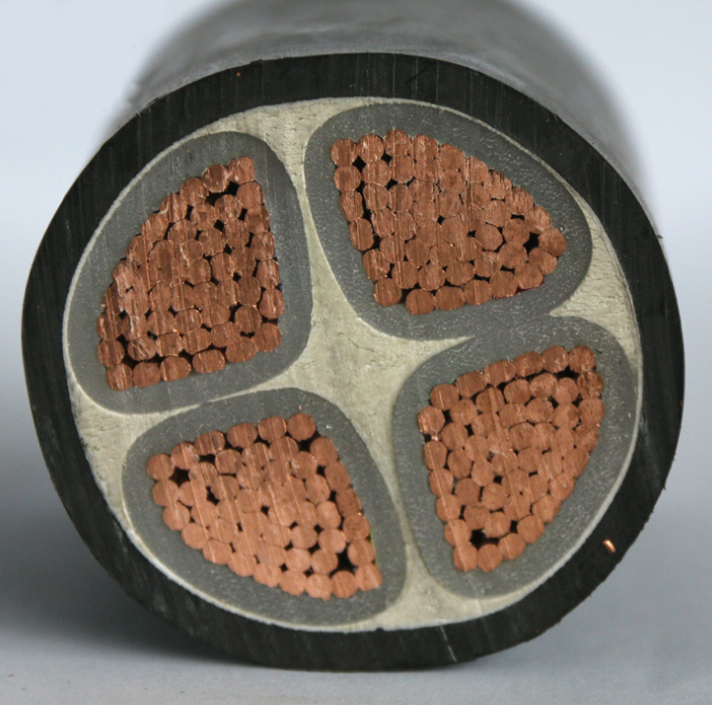Copper (aluminum) core PVC insulated PVC sheathed power cable, an important member of the power cable, the two letters V represent the insulation and sheath material are polyvinyl chloride;

Dongjiang Cable NH-VV PVC sheathed power cable
The first V is the sheath of the cable. The material is PVC, which means plastic. The second V is the main insulation of the cable.
Full name is copper conductor, PVC insulated and sheathed power cable
Chinese name vv cable full name PVC insulated PVC sheathed cable two letters V means that the insulation and sheath materials are all part of the conductive conductor, insulation layer, filling layer and sheath layer of PVC. GB/T 12706.1 -2008 rated voltage is generally 0.6/1KV, or below 35kv
table of Contents
What is a VV cable?
◪Full name of VV cable
◪Product structure
◪Executive standards
◪Rated voltage
◪Working temperature
◪Allow bend radius
◪Use
2 VV cable common specifications
◪The difference between 3 VV cable and YJV cable
◪Different insulation materials
◪Different operating temperatures
◪Operating voltage range is different
◪Price and longevity
What is VV cable editing
VV cable is a very common type of power cable. Its function is the same as that of YJV cable. Although the overall performance is not as good as YJV cable, and it is gradually replaced by YJV cable, it is still available in many fields because of its low price. A wide range of applications. Let's take a look at the simple parameters of the VV cable -
❈ product description

Copper (aluminum) core PVC insulated PVC sheathed power cable, an important member of the power cable, the two letters V represent the insulation and sheath material are polyvinyl chloride;


GB/T 12706.1-2008;
Rated voltage
Generally 0.6/1KV, or less than 35kv;

Allowable bending radius
Not less than 10 times the outer diameter of the cable;
use
Generally used as a power transmission hub, often buried in the soil or laid in the room, in the channel, in the tunnel, the insulation distance between the lines is small, without the tower, occupying less space, basically does not occupy the space on the ground.
Common specification model editing of VV cable
The number of cores includes 2 cores, 3 cores, 4 cores, 5 cores, 3+1, 3+2, 4+1;
The section consists of a cable consisting of 1.5 mm2 - 240 mm2, such as a VV3*95+1*50 cable representing 3 strands of 95 square core plus 1 strand of 50 square core, other synonymous.
Difference between VV cable and YJV cable
Although VV cables can replace YJV cables in many cases, and it is difficult to distinguish each other in appearance, the difference between VV cable and YJV cable is relatively large.
First, let's first understand their full name.
YJV cable full name copper (aluminum) core XLPE insulated PVC sheathed power cable;
VV cable full name copper (aluminum) core PVC insulated PVC sheathed power cable;
The insulating material used for the YJV cable is cross-linked polyethylene, while the VV cable is made of polyvinyl chloride. Because the insulation of the YJV cable does not contain chlorine, it does not generate a lot of chlorine gas when burning (chlorine is a toxic gas). In comparison, XLPE insulation has higher temperature resistance, is more environmentally friendly, and has better performance than ordinary PVC.
The conventional YJV cable allows a maximum operating temperature of 90 ° C. When short circuited (within 5 seconds) the maximum temperature does not exceed 250 ° C; the conventional VV cable allows a maximum operating temperature of about 65 ° C, and the short-circuit (within 5 seconds) the maximum temperature does not exceed 160 ° C . The difference in maximum operating temperature determines the higher current carrying capacity of the YJV, which also determines the overall performance of the YJV cable over the VV cable.
Normally, the YJV cable operates at a voltage range of 6 to 500 kV, while the VV cable operates at 1 to 6 kV. Therefore, VV cables are generally used in low-voltage environments, while YJVs include high-medium-low voltage environments, which is why YJV cable manufacturing processes are demanding.
The same specification model, the price of YJV cable is slightly more expensive than the price of VV, which may be the reason why VV cable is still alive. However, YJV has a longer service life and is more resistant to high temperatures and insurance. It is more cost-effective to use YJV cables in terms of long-term and safety factors.
Finally, the residential project recommends the YJV cable to be safer and more environmentally friendly. If the budget is limited, you can choose to use VV cables in places where non-human habitats and voltage and temperature are not required. All in all, the general trend is that YJV cables are gradually replacing VV cables.
Contact
Supplier














